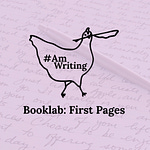Let me start by answering the question posed in the title: very bad. Very very bad. Terrible, even. Plotless meandering senseless drivel involving two-dimensional characters continually lifting cups of coffee to their lips and then never putting them down and suddenly, without warning, pumping gas instead. Although, to be honest, that last is never my personal problem. My (incoherent, emotion-less, inconsistent) characters tend to meticulously move around a reasonably clear, if poorly described, landscape. They speak in full, grammatically correct sentences. They even banter and they’re often quite entertaining as they go about doing completely the wrong things for the wrong reasons.
And this was my problem. I heard the phrase “shitty first draft” (as you no doubt have) many times, and I thought, well, but it’s not. It’s not unreadable, or incomprehensible. If you picked it up and read just one paragraph you’d mistake it for a real book. Pull any single paragraph out of any draft I’ve ever written and you’d go, yeah, okay. That’s a book by a writer! Not a great writer or anything. My point is that the writing is always fine. Good, even. Sometimes better than good.
So when the drafts themselves turn out to be pretty shitty, I tend to be way more crushed than I should be—because “shitty” doesn’t mean what I thought it did. It’s taken me far longer than it probably should have to figure that out. Maybe everyone else is way ahead of me here. But the thing that makes a shitty first draft “shitty” isn’t that the writing is bad.
It’s that it’s a terrible book.
When I first started writing fiction, I had only my own early drafts to compare things to. They weren’t (aren’t) good—they lacked structure, were too complicated, explained some things too much and other things not at all. There’s no interiority, emotion or description. I write around the plot, or include too much plot, or try to attach a plot that’s not thematically integrated with the story. The bones are soft floppy poorly formed and malleable—but if I, say, burn down a barn, the scene itself will be exciting and consistent. That often fooled (fools) me into thinking my draft is further along than it is. And then I thought it was just me—other people probably wrote pretty good book drafts that then needed revision in different ways. Other people started with good bones and worked out from there. Only I, special stupid snowflake that I was, kept writing all the skin and clothing and hair and sometimes organs to go on wrong or non-existent skeletons.
I’ve since read a lot of other first drafts and I’ve realized: I was totally wrong.
This is how lots of people do it.
This IS what “shitty first draft” means. (Or it can be, it probably means lots of other things too). Most of us (honestly, even if we blueprint and outline and all the things) are going to end up with someone telling us that the book has no middle, that we need to cut the first 2/3, that our protagonist isn’t unlikeable per se, but rather that there is nothing on the page to like or dislike. Someone will say, he has no agency. She’s too passive. There’s nothing at stake in the first third of the book, why on earth would she take this job/go to this party/answer that phone call, why this, why him, why now. And they will be right (although they might not be right about how to fix it).
Whether it’s a freelance editor, a good beta reader or the hosts of TSNOTYAW who tells you that your draft, be it first or second or fifth, is still firmly mired in “shitty” territory, the most common reaction is something along the lines of:
This is too bad. It’s too awful, if I’ve come this far and I still don’t have this or that fundamental thing in place—if there is somehow no climax or no reason to relate to the character or no clear arc or evolution, if somehow this is 80K words but it is still not a book…
Yeah. Turns out that’s the way it works. For a LONG time. For draft after draft after draft. For the draft that gets you an agent, even maybe. Maybe for the draft that you sell.
Revision—re-drafting— isn’t polishing, or even adding dialogue or emotion or removing a character or changing the POV from third close to first present and back again. Until the very last versions, it isn’t just working with the words on the page. It’s working with the ideas and the concepts and the scenes and the moments. The characters and the themes and the arcs. This is what we mean when we say good writing comes last (Episode 354) and when we try to distinguish between editing and revising. They’re all shitty drafts. Until—and this only happens if you just keep going in there and tearing out the liver you stuck in where the heart should be or whatever—it’s finally a book.
I don’t know about you but I hate this every single time. Some people do it faster than others but every writer whose early drafts I’ve ever read is going through some version of the same thing. It starts with something mind-bogglingly terrible—when considered as a book—far, far more often than I once believed.
If a first draft has a beginning, a middle and an end, it’s a good first draft. It can be as bad as it has to be, as many times as it needs to be, for as long as it takes.
If you find that encouraging… then you’re definitely in the right place.











